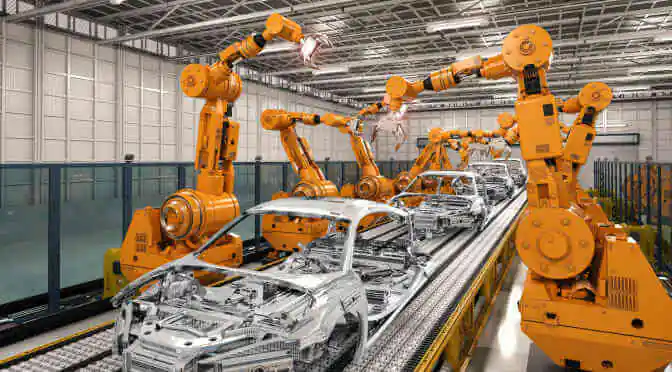The current average labor cost savings achieved by replacing humans with robots in the US is 17.71%. Technavio analysts estimate that this figure will increase to 21.85% by 2020 due to the continuous decline in cost of industrial robots.
Industrial Robotics Market in the United States
The benefits of implementing industrial robotics in the manufacturing industry have been well documented in recent years; they can be programmed easily to adapt to new production lines, their margin of error is less compared to humans’, and they work longer while requiring minimal supervision. In addition, using industrial robots increase the chances of producing defect-free products, reduces product failure and waste, and does not require additional expenditures on healthcare, insurance, and income. These robots require minimum heating and lighting, which considerably reduces energy consumption. It is advantages like these that are driving the market, which will nearly double by 2020.
If replacing human workers with robots wasn’t already tempting enough for companies, the cost of purchasing and installing them is swiftly declining. The cost to purchase and implement a robotic spot welder has plummeted from $183,000 in 2005 to $132,000 in 2014, with the price forecasted to drop another 22% by 2025, according to Technavio’s lead industrial automation analysts.
In computer electronics manufacturing, it costs $4 per hour to use a robot for a routine assembly task compared to $24 for an average worker. In the US, industrial robots in auto manufacturing are already operating at a cost of $7.25 hourly wage after the cost of the robot is recovered. For example: the Baxter collaborative robot from Rethink Robotics, which works alongside the human workforce on the factory floor, only costs $22,000. These factors are attracting end-users to adopt industrial robots in the US.
Labor Cost Savings from Robot Adoption
The five leading countries in the market accounted for 70% of the total industrial robots sales volume in 2014: China (who will account for more than one-third of all industrial robotics installed worldwide by 2018), Japan, the United States, the Republic of Korea and Germany. The United States also ranks in 7th in the world in terms of robot density, while the Republic of Korea, Japan and Germany make up the top three.
By 2025, labor cost savings in the United States from the adoption of advanced industrial robots should surpass 22%. Despite the recent and estimated decrease in robot prices, the United States is still forecasted to save less than its competitors, Japan and South Korea.

Graph created by Technavio, Source: Boston Consulting Group
Industrial Robotics in the Food and Beverage Industry
The automotive industry dominates the market in terms of robot density, however, the food and beverage segment is actually the fastest growing for industrial robotics in the United States.
The industrial robotics market in the US by the food and beverage industry was valued at $103.2 million in 2015 and Technavio analysts expect it to reach $218.6 million by 2020, growing at a CAGR of 16.2%.

The usage of industrial robots in the food and beverage industry has really gained pace since 2013, when robots were used primarily for applications like palletizing and packaging. However, over the last three years the applications of the robots have extended from packaging to handling raw materials, pizza assembly, grading of fruits and vegetables, cake decoration, and handling. They are also used in poultry and for deboning, trimming, and grinding pork and beef. Now the robots are starting to make their way from the factory into the actual restaurants.
Former McDonalds USA CEO recently stated that it’s cheaper to buy a $35,000 robot than hire an employee at $15 an hour. After seeing a decline in revenue for the first time in nine years, while having to combat employees who are demanding a minimum wage hike to $15/hour, the franchise decided to open 25,000 robot-run restaurants by the end of 2015. Wendy’s is now taking a similar approach and just recently announced they will be installing 6,000 kiosks by the end of 2016. There will surely be many others that follow in the footsteps of these fast food giants, as the fight against rising minimum wage costs in the United States has just begun.




